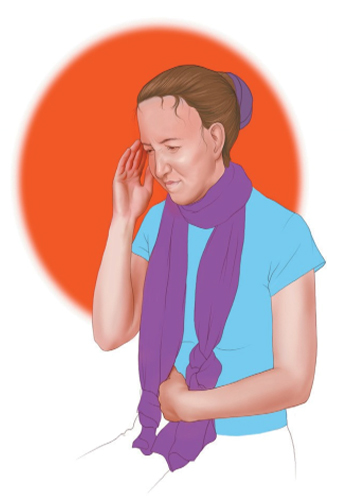Prof. Dr. Serbülent Gökhan Beyaz

Cluster Headache
Cluster Headache
Clinical Syndrome
Cluster headache takes its name from the characteristic of the headache. Headaches occur in clusters, followed by periods of headache-free remission (pain-free). Other common diseases affecting primarily female patients In contrast to headache disorders, cluster headaches are much more common in male patients (male to female ratio 5:1). Cluster headache, which is much less common than tension-type headache or migraine headache, It is thought to affect about 0.5%. The onset of cluster headache occurs in the late 30s or early 40s, unlike migraine, which occurs in the 20s of life. Unlike migraine There is no family history in cluster headache and there is no period with aura. Attacks usually occur about 90 minutes after the patient falls asleep. This relationship with sleep is related to the shift worker’s night sleep to daytime sleep. It is reported to occur when the diurnal rhythm changes. Cluster headache also appears to follow a distinct chronobiological pattern that coincides with seasonal changes in day length. It pattern causes increased cluster headaches in the spring and fall.
Signs and Symptoms
Cluster headache is characterized as a unilateral headache with temporal and retro-orbital location. Deep in the pain It has a burning sensation or a quality-reducing feature. Physical findings during an episode of cluster headache may include Horner’s syndrome, which consists of ptosis, miosis, facial flushing, and conjunctival injection. (ptosis-upper eyelid, lower eyelid elevation, miosis-constriction of the pupil). In addition, profuse tears and rhinorrhea are often present. Eye changes may become permanent with recurrent attacks. Cluster Headaches are said to be among the worst pains a person can suffer from. Because of the severity of the pain, the clinician should closely monitor the patient for overuse or misuse of the drug. suicide, long associated with long-term untreated attacks. Ophthalmological evaluation, including measurement of intraocular pressures, is indicated in significantly affected patients. Cluster headache with a history of headaches It is usually diagnosed in patients for clinical reasons. Migraine headaches are often confused with cluster headaches, and this misdiagnosis leads to inappropriate treatment plans because the management of these two headache syndromes quite different.
Treatment
While most patients with migraine headaches experience improvement with beta-blocker therapy, patients suffering from cluster headaches often need more personalized treatment. Initial treatment is usually daily with prednisone. They are sphenopalatine ganglion blocks made with local anesthetic. The reasonable starting dose of prednisone is 80 mg given in divided doses, tapering off to a daily dose of 10 mg. Headaches are fast If not adequately controlled, 100% oxygen inhalation with a tight-fitting mask is added. If the headache persists and the diagnosis of cluster headache is not made, a trial of lithium carbonate may be considered. However, the therapeutic window of lithium carbonate is small and this drug should be used with caution. Other medications that may be considered if these treatments are ineffective include methysergide, sumatriptan, and sumatriptan. similar drugs are available. In rare patients, The above-mentioned treatments are ineffective. In this setting, more aggressive treatment is indicated when the severity of cluster headache is considered and the risk of suicide is high. Gasser’s ganglion Eradication with glycerol injection or radiofrequency lesion may be a reasonable next step. Case studies suggest that deep brain stimulation may play a role in the treatment of persistent cluster headaches.
